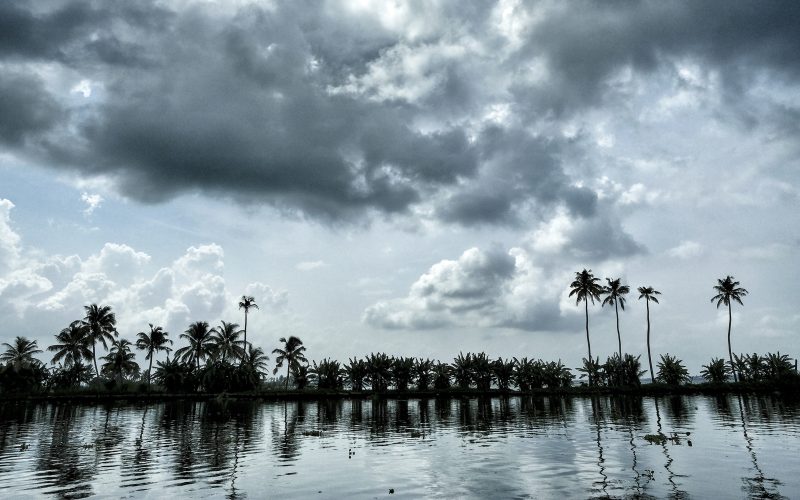Southwest monsoon is around the corner, a brewing El Niño sends jitters emergence of El Niño weather phenomenon this year has raised worries over possibility of normal to below normal monsoon in India. The unusually persistent La Nina has ended after a three-year run, and the possibility of El Niño forming later this year is rising, according to the World Meteorological Organisation. In its latest update on 3rd May, the organization expects that there is a 60 percent chanceof a transition from El Niño-Southern Oscillation (ESNO)-neutral state to El Niño during May-July 2023, increasing to about 70 percent in June-August and 80 percent between July and September.
The Indian summer monsoon or the southwest monsoon accounts for more than 70 percent of the annual rainfall that India receives in a four-month long period, June to September. Following the departure of southwest monsoons, northeast monsoon sets in by October which accounts for about only 11 percent of the annual precipitation. The rains received during the northeast monsoon is limited to peninsular India mainly Tamil Nadu, Andhra Pradesh, Rayalaseema, interior Karnataka and Kerala. Even as its contribution is less compared the southwest monsoon, as per the IMD, Tamil Nadu receives at least 48% of its annual rainfall (on average) from northeast monsoon, making it the chief monsoon season for the southern state.
The key agriculture seasons in India – Kharif and Rabi coincides with the arrivals of monsoons. The agriculture sector, which contributes to about 15 percent of the GDP, providing employment to more than half of the country’s population, continues to be dependent on the monsoon to a large extent. According to Ministry of Agriculture and Farmer’s Welfare, rainfed agriculture occupies about 51 percent of the country’s net sown area and accounts for nearly 40 percent of the total food production. The monsoon plays a key role in determining the production and yield of key kharif crops like rice, pulses, and oilseeds such as soybeans. It is also crucial for rabi crops as it impacts the ground water levels and reservoirs which are critical for rabi crops irrigation.
According to a study published in Journal of Earth System Science, “Total foodgrain yield over India during Kharif (summer) season is directly affected by variations in the summer monsoon precipitation (June–September). An increase (decrease) in rainfall is generally associated with an increase (decrease) in foodgrain yield. A similar correspondence during the Rabi (winter) foodgrain yield is not evident. The Rabi crop is not directly affected by variations in the post-monsoon precipitation (October–December) alone, also the summer season precipitation influences the Rabi crop through water and soil moisture availability over many parts of India. Though the reduction of rainfall activity during the entire summer monsoon season leads to reduction in crop yields, the occurrence of prolonged rainfall breaks also causes adverse effect on the crop growth resulting in reduced crop yields.”
The influence of monsoon is not limited to the agriculture sector and food security alone. Since much of the rural population is dependent on agriculture and allied activities, rise in income could raise the demand for various goods and services, which will boost economic growth. Higher farm output could also keep food inflation under check. Replenishment of reservoirs, generation of electricity, government spending, import/exports etc. are dependent on the performance of monsoon. This is intertwined with the various sectors of the economy and have a huge bearing on the Indian socio-economic progress. And therefore, monsoon is often called the ‘real finance minister.
The Indian monsoon is a very dynamic and unique phenomenon. From global weather patterns like the Indian Ocean Dipole, Madden-Julian Oscillation, El Niño Southern Oscillation etc. to several local factors like the distribution of atmospheric pressure, the flow of moisture from the oceans, and the interaction of the monsoon winds with local topography, etc. influences the intensity, timing, and length of monsoon. Monsoon rainfall in India generally exhibits significant variability from year to year. However, there have been indications of changing rainfall patterns over time and has been growing more erratic. Some regions have experienced an increase in monsoon rainfall, while others have witnessed a decrease.
According to the report “Assessment of Climate Change over the Indian Region,” released by the Ministry of Earth Sciences, Government of India, the summer monsoon precipitation (June to September) over India has declined by around 6% from 1951 to 2015, with notable decreases over the Indo-Gangetic Plains and the Western Ghats. Recently, there has been a change towards more frequent dry spells (27% higher during 1981–2011 relative to 1951–1980) and more intense wet spells during the summer monsoon season. The frequency of localized heavy precipitation occurrences has increased worldwide in response to increased atmospheric moisture content. Over central India, the frequency of daily precipitation extremes with rainfall intensities exceeding 150 mm per day increased by about 75% during 1950–2015. The overall decrease in seasonal summer monsoon rainfall during the last 6–7 decades has led to an increased propensity for droughts in India. Both the frequency and spatial extent of droughts have increased significantly during 1951–2016. In particular, areas over central India, southwest coast, southern peninsula, and north-eastern India have experienced more than 2 droughts per decade, on average, during this period. The area affected by drought has also increased by 1.3% per decade over the same period. A fall in number of rainy days have been observed as well. A report titled ‘Proportional Trends of Continuous Rainfall in Indian Summer Monsoon’ found that from 1985 to 2018, the number of rainfall days from 1985 to 2018 shows a decline during July over all regions of India.
Overall, the number of rainfall days exhibits a decreasing trend in the summer season and months except for June over India. Central India and northeast India exhibit a decreasing trend in the number of rainy days for the summer season. August also experienced a reduced number of rainy days over all regions, except for the southeast. The number of rainy days decreased over the northeast and increased over the west coast in the late monsoon period. Climate change is another contributing factor that is seen messing with the monsoons.
As India braces for another monsoon season, the forecast of El Niño has sent jitters. El Niño and La Niña are the warm and cold phases of the ESNO, a current weather phenomenon across the tropical Pacific. The El Niño weather phenomenon characterized by the warming of the central and eastern equatorial Pacific Ocean, can have significant impacts on global weather patterns, including in India. It is often linked to weakened monsoon, leading to below-average rainfall and drought conditions in parts of India. According to a report, “Unravelling the Mystery of Indian Monsoon Failure During El Niño,” the 132-year historical rainfall record reveals that severe droughts in India have always been accompanied by El Niño events. Yet, El Niño events have not always produced severe droughts. What’s more concerning is that the transition from La Niña winter to El Niño summer could result in a larger deficit in monsoon. Historical data shows that there were 15 moderate and strong El Niño events between 1951 and 2022. Of these years, the Indian monsoon was deficient in 8 years and in another 3 years the monsoon rainfall was on the lower side of the norm. Therefore, in a moderate to strong El Niño year, there is a 73% chance that monsoon rainfall in India will be below the long-term normal. The last major El Niño event was in 2015 and Indian monsoon rainfall was 13% lower.
The Indian Meteorological Department (IMD) has forecast a normal monsoon this year and expects it to arrive late, on June 4 as against the usual schedule of June 1. IMD is of the view that southwest monsoon seasonal (June to September) rainfall over the country as a whole is most likely to be 96% of Long Period Average (LPA) with a model error of ± 5%. The LPA of rainfall over the country as a whole for the period 1971-2020 is 87 cm. In the meantime, Skymet expects a ‘below normal’ monsoon to the tune of 94% of the long period average of 868.6 mm. While acknowledging the possible emergence of El Niño this year, IMD also predicts that positive Indian Ocean Dipole conditions are likely to develop during the southwest monsoon season, which is currently at a neutral state. The Indian Ocean Dipole (IOD) is a climate phenomenon that affects the sea surface temperature and rainfall patterns over the Indian Ocean and a positive IOD is often associated with enhanced monsoon rainfall in the Indian subcontinent.
While the threat of El Niño hangs on, the government has set the total food grains production target at a new record high of 3,320 lakh tonnes for the year 2023-24 compared to 3,235 lakh tonnes produced in 2022-23. In the National Conference on Agriculture for Kharif Campaign – 2023, the government has set the target for the production of pulses at 292.5 lakh tonnes compared to 278.1 lakh tonnes in 2022-23, and oilseeds production is expected to increase from 400 to 440 lakh tonnes in 2023-24. The agriculture ministry is working with other departments and the state government to ensure that the seeds, fertiliser, fodder, and other inputs needed for the upcoming kharif crops are available. The ministry is also activating district-level agricultural contingency plans in case there is a potential shortfall in monsoon rains.







